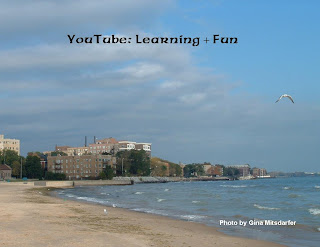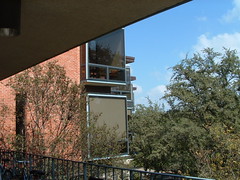 This method is about Social Networking. Didn’t Facebook begin as a way for college students to connect with each other online? Yet since then, everyone has hopped aboard such sites as MySpace and Facebook.
This method is about Social Networking. Didn’t Facebook begin as a way for college students to connect with each other online? Yet since then, everyone has hopped aboard such sites as MySpace and Facebook.Previous to this method, I already had MySpace and Facebook accounts at home. When I first searched, I didn’t see my library on either site but noticed our web home page was being revised. Trying the Beta site, I found it DID have a Facebook page with photos, videos, and events. How odd I couldn't find it searching within Facebook.
Looking around, I saw many other campus employees with accounts. It made the article about separating accounts for your professional and personal life quite relevant. An interesting point was made about some needing a different place to relax with friends and not worry about censoring everything they said or posted. Each individual's decision of how work and home overlap or do not overlap will depend on their life style.
Technology is speeding so fast some Method 8 links were already broken or incomplete. One discussion about what if the person who sets up the MySpace /Facebook/Twitter page leaves their library had indeed occurred. In addition, the article “Do Social Networks Bring the End of Privacy?” only brought up the introduction and to continue reading you either had to subscribe to Scientific American or pay for the issue. That was too bad, as it seemed like an interesting piece.
“Your Guide to Online Privacy” showed how technology is leaping years ahead of any privacy legislation. Until social networking sites have safeguards in place, it behooves us to clear our cookie cache on our computers and be wary of giving out too much information. Of course, this also means we’ll need a whole notebook listing all our log-ons and passwords!
How I feel about online socializing is an open and evolving question. When I first joined MySpace at home, I enjoyed creating a page with my own photos and designs, uploading video for family and friends, creating my first blog posts, and being able to connect with lost friends and family. Personal identify is so fluid on MySpace that many have created pages as historical people (a quick check showed there are currently 183 John F. Kennedys!).
Earlier this year, some family members urged me to try Facebook, which I did. Now, I hardly ever log into MySpace and, apparently, neither do other friends. There is a pull to check Facebook’s Newsfeed each evening, bringing you everything at once--from inane comments to philosophical thoughts, from trivial games to gorgeous photos. It runs the gamut and depends entirely upon the friends you accept. Based on that criterion, I’ve found out how to “turn-off” some people’s comments or silly quiz results.
Online socializing is both appealing—instantly sharing thoughts, photos, videos, and links all at once—and appalling—there are a few degrading and disgusting quizzes, videos, and games.
One thought has occurred to me, as I admit to sometimes spending too much time on my home computer: in the time it takes to read and update my social status, couldn’t I have read a couple of chapters in a real book? At what point do I "switch off" and relax? These days, it does feel like there is an obligation to be connected all the time. Why? Because, technically, we can? That might not be very healthy.
In trying to connect with our patrons, is our library putting more time constraints on our overscheduled and over-tech'ed students? In the long run, will the new web page linking to Facebook, Twitter, YouTube, RSS, Delicious, and Flickr become a time burden, distracting their study time? Or will their always-been-connected way of life continue and be natural for this generation and all who follow?


